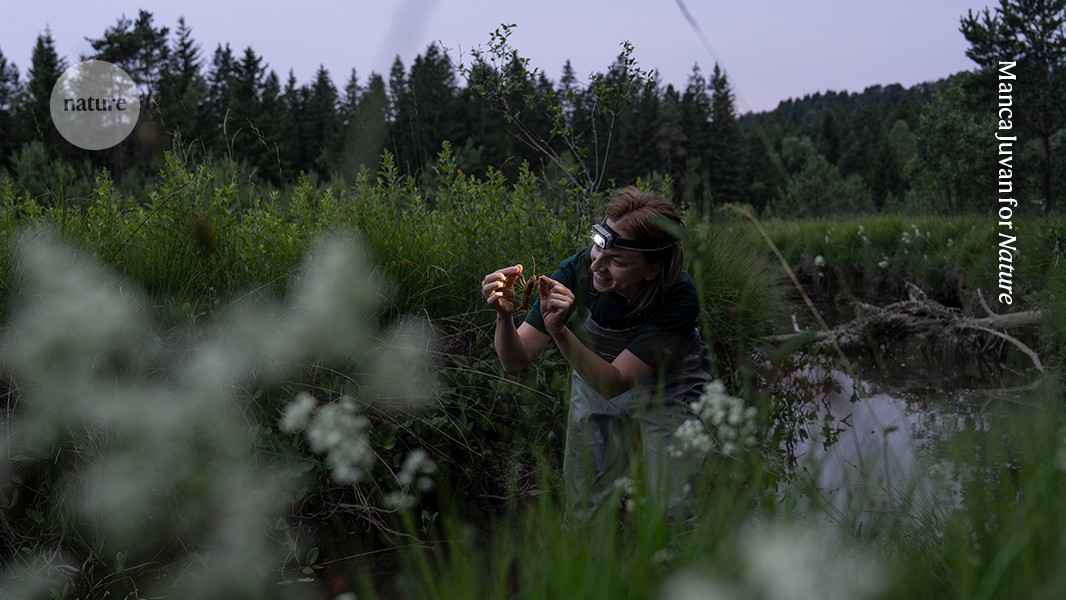“I study leeches called branchiobdellidans that live on crayfish. These leeches are just millimetres long and are symbionts — meaning they live in a close, long-term association with their host. They feed on microorganisms and debris that collect on the host’s surface. In small numbers, they help to keep the crayfish clean, but in large colonies, they can become mildly parasitic.
Here, I’ve just caught a crayfish under torchlight, and I’m holding it carefully so that the symbionts aren’t washed away. After catching each crayfish, I measure its length and use a paintbrush to push a symbiont sample into a small vial. Tweezers would damage their delicate bodies.
This photo was taken in June, in a small river in Slovenia where I recently discovered a new species of symbiont. Later, in the laboratory, I analysed the sample’s DNA to trace how Astacus astacus — the noble crayfish — and its symbionts have evolved together over millions of years.
The leeches aren’t just passengers; they’re bioindicators. When they disappear, it can be a signal that crayfish populations — and the rivers themselves — are in trouble. Invasive crayfish from North America (Pacifastacus leniusculus), which were introduced for farming, are already disturbing the ecological balance in waterways in Slovenia.


